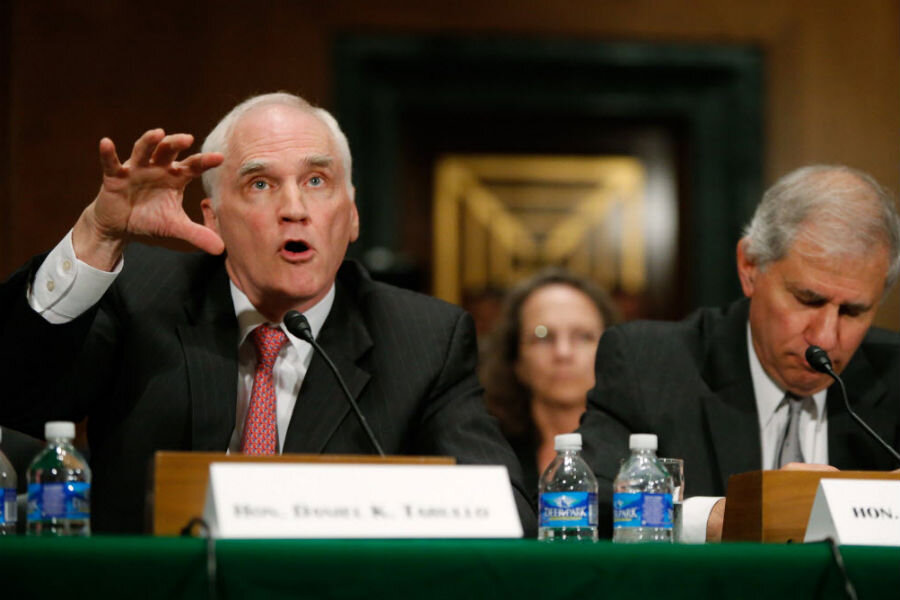Fed pushes largest US banks to shrink
Loading...
| WASHINGTON
The Federal Reserve is pushing the biggest U.S. banks to shrink so that they're less of a risk to the financial system.
In testimony at a Senate hearing Tuesday, Fed Gov. Daniel Tarullo highlighted several proposals that regulators are working on. They include imposing additional capital requirements for the eight largest banks — including JPMorgan Chase, Citigroup and Bank of America — that exceed the levels mandated by international regulators. That means the banks would have to set more cash aside and raise more money to increase their cushions against unexpected losses.
The amount of these "capital surcharges" would increase in proportion to how risky the regulators deem a bank to be, Tarullo told the Senate Banking Committee. That could push them to cut their risk and become less risky to the system. They would have an incentive to shed businesses and get smaller because otherwise they'd have to set aside more capital. Some of the banks have grown bigger since the crisis.
The proposals aren't new. But combined with recent actions by the Fed and other federal regulators, experts say they carve out a tough stance.
Joseph Lynyak, a regulatory attorney at the firm Dorsey & Whitney, said the regulators are signaling that they "want these companies to shrink." Big banks may reshape themselves and shed some businesses as a result of the changes, Lynyak suggested.
But banking industry groups say the requirements could limit access to loans for businesses and consumers, by reducing the amounts that banks would have available to lend.
Some of the banks already meet the stricter capital requirements being proposed, experts say.
Stricter capital requirements were mandated by Congress after the financial crisis, which struck in 2008 and ignited the worst economic downturn since the Great Depression. Hundreds of U.S. banks received taxpayer bailouts during the crisis, including the eight mega-banks that would be subject to the additional layer of capital requirements that Tarullo discussed. The eight, considered so big and interconnected that each could threaten the financial system if it collapsed, are JPMorgan Chase, Citigroup, Bank of America, Goldman Sachs, Wells Fargo, Morgan Stanley, Bank of New York Mellon and State StreetBank.
Tarullo said the Fed also is looking at possible changes to requirements for banks when they use the short-term funding markets to borrow from other banks. The idea is to reduce their reliance on those markets, which seized up during the financial crisis.
Last month, in an action viewed as signaling toughness, the Fed and the Federal Deposit Insurance Corp. told the 11 biggest U.S. banks that their plans for unwinding their operations in case of failure are inadequate to prevent the sort of financial disaster that struck in 2008. And last week, the regulators required all large U.S. banks to keep enough high-quality assets on hand to survive during a severe downturn. The rules subject the banks for the first time to so-called "liquidity" requirements, replacing voluntary standards. Liquidity is the ability to access cash quickly.
"The Fed is signaling to Wall Street ... that it is dead serious about making these banks assume the cost of their high-risk activities" rather than taxpayers, Dennis Kelleher, president of Better Markets, said in a telephone interview. The group advocates strict regulation.







